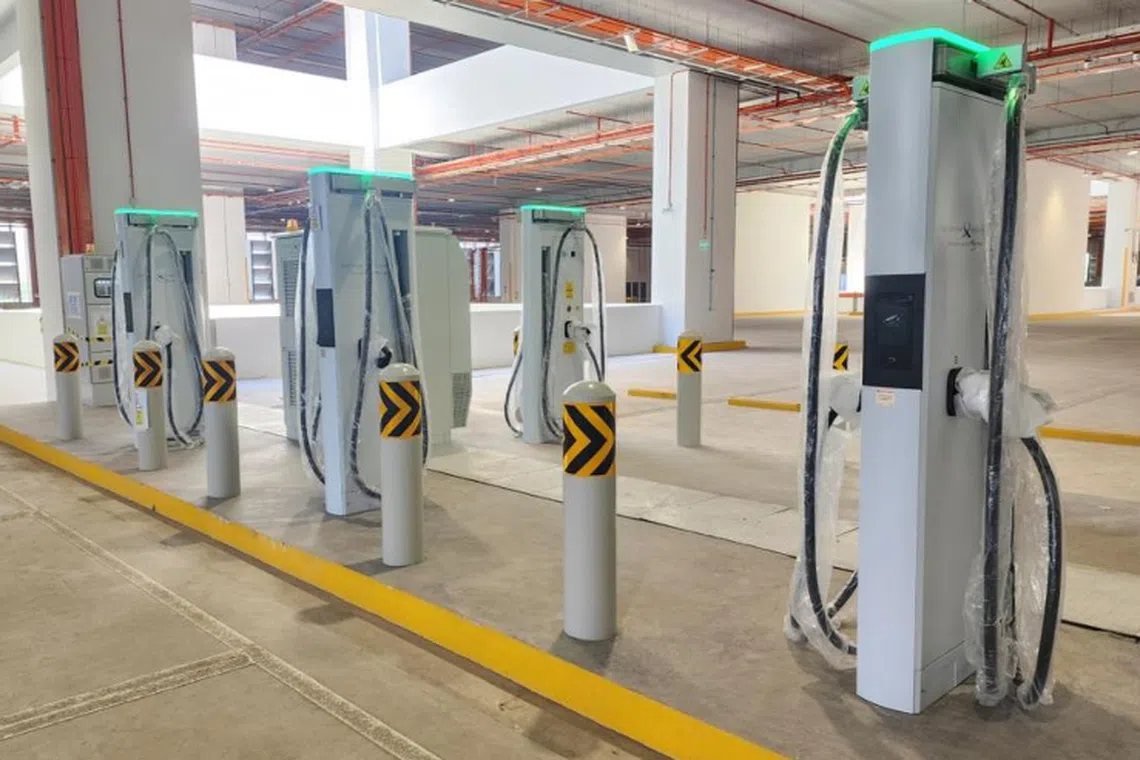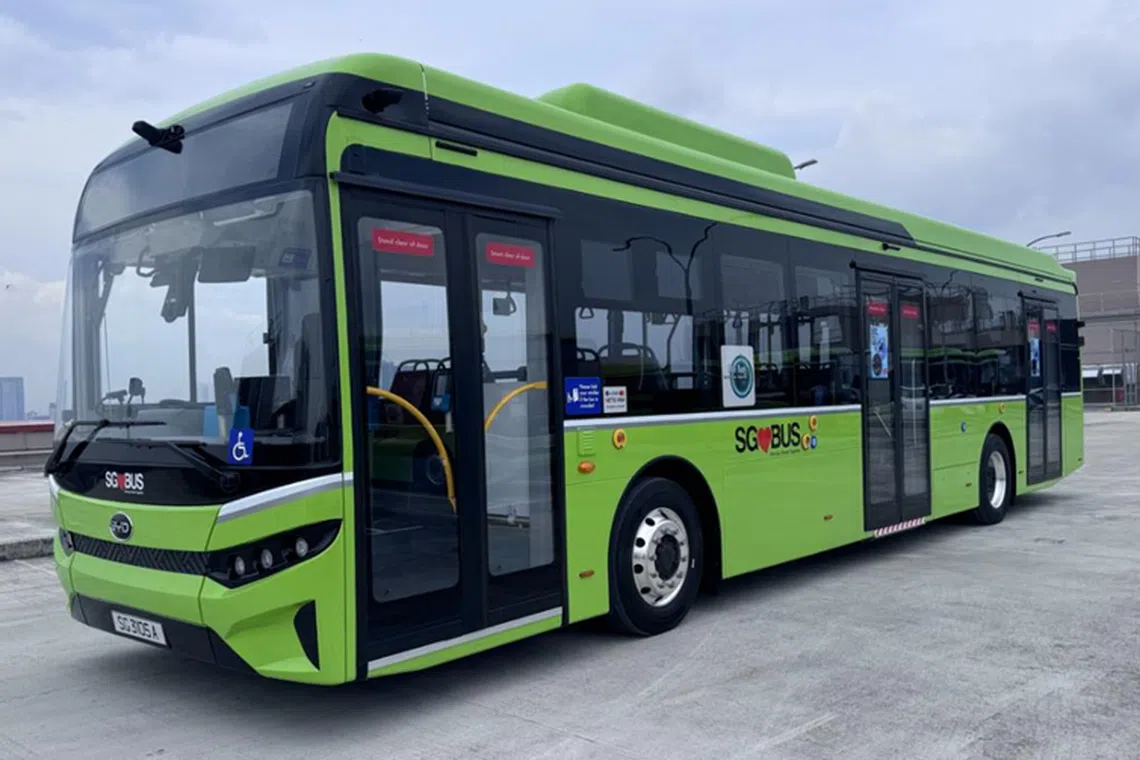Another 10 electric public buses to ply Singapore roads from December
Sign up now: Get ST's newsletters delivered to your inbox
Follow topic:
SINGAPORE - More public bus users will be able to enjoy quieter, emission-free rides, as the first batch of 360 electric buses purchased by the Land Transport Authority (LTA) in 2023 are on track to enter service from December.
To be deployed on bus services 86, 107 and 159, which ply routes in north-east and central Singapore, this batch of 10 battery-powered, three-door, single-decker buses have been registered and leased to bus operator SBS Transit (SBST).
This takes the total number of electric buses plying public routes here to 70.
LTA said on Oct 23 that the 10 new buses, made by Chinese electric vehicle giant BYD, will be the first to use charging infrastructure at the newly constructed Sengkang West bus depot.
The five-storey depot in Seletar West Road 1, which can accommodate up to 500 electric and conventional buses, was handed over to SBST in August, and preparations are under way for it to start operations in early 2025.
Built at a total cost of at least $400 million, according to the Ministry of Transport’s 2019 budget book, the depot was supposed to open in 2023. But this was delayed due to the Covid-19 pandemic.
It is touted by LTA as its first multi-storey bus depot to have large-scale, high-powered electric vehicle charging systems, with 240 chargers that each provide up to 360kW of power.

Chargers at Sengkang West Bus Depot.
PHOTO: LTA
With these facilities, a single-decker electric bus can be fully charged in under 1½ hours, LTA said.
In comparison, the electric bus chargers installed at other existing depots are rated at 90kW and 150kW.
LTA bought its first electric buses in 2018 to evaluate the technology, bringing in 60 electric buses for about $50 million.
A bigger push came in November 2023 when LTA awarded two contracts worth a combined $166.4 million for 360 electric buses.
Since then, an option to buy 60 more electric buses from BYD has also been exercised, taking LTA’s total order to 420 vehicles.
All 420 new electric buses are expected to be progressively deployed for service by end-2025, replacing older diesel buses reaching the end of their 17-year statutory lifespans, LTA said in response to queries.

The 420 new electric buses being rolled out will have a range of about 280km on a full charge, which is the distance that public buses here cover in a day on average.
PHOTO: LTA
LTA’s goal is for half of the 5,800 public buses here to run on batteries by 2030, and it has committed to buying more than 2,000 electric buses over the next five years to achieve this.
The 420 new electric buses being rolled out will have a range of about 280km on a full charge, which is the distance that public buses here cover in a day on average, LTA said.
The buses from BYD are the company’s latest B12 flagship model, with 28 seats and space for 55 standing passengers. This capacity is comparable to that of existing electric buses here.
Cycle & Carriage will deliver three Zhongtong N12 electric buses – the Chinese company’s latest single-deck model – by the end of 2024, with deployment details to be announced later.
The new electric buses from both manufacturers will also have features not seen on existing buses.
Instead of the usual wing mirrors, the new buses and future ones that LTA buys will use a camera-based system. With the system, displays located in the driver’s cabin will show real-time footage from high-definition cameras on the front and either side of the bus.
The cameras provide a wider and clearer view to bus drivers, minimising blind spots and improving visibility at night and in bad weather, LTA said.
The new buses will also have automated boarding ramps for passengers using wheelchairs or mobility aids that can be deployed at the push of a button located on the exterior of the bus near the middle door.
On existing buses, drivers need to manually lift the ramps and then fold them back – a strenuous task, especially for older workers.
Apart from housing buses, the Sengkang West depot will be able to house up to 350 transport workers in staff quarters located on site as well. The eight-storey accommodation block will have 39 units, each with a kitchen, yard and en-suite toilets.
LTA previously said that integrating staff quarters with the new depot maximises land use. It also reduces travelling time for bus drivers who would otherwise need to commute to work.
Senior bus captain Vincent Yeo, 48, who has been with SBST for 12 years, will be among those driving the new electric buses. He said the new buses are quiet, stable and spacious, which translates to a smoother, more comfortable ride for passengers.
While he is still familiarising himself with the new camera-based mirror system, Mr Yeo said it gives him a much better view, which is helpful when reversing or making big turns.
“While we are driving, we are able to detect all the potential hazards around us,” he added.



